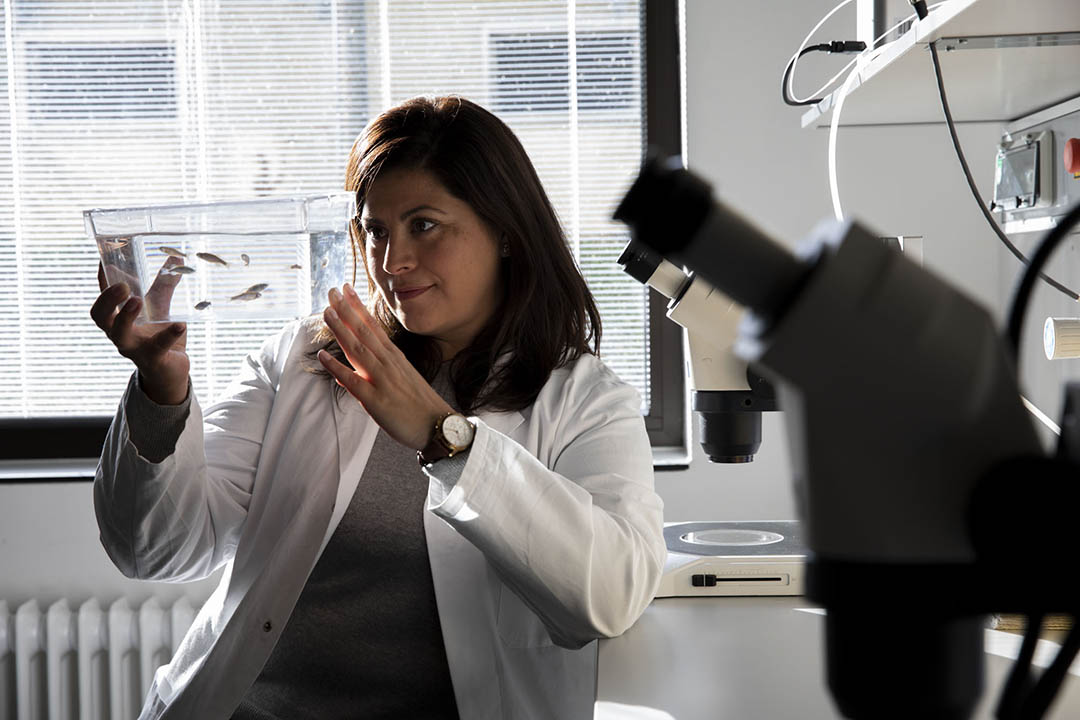
USask researchers studying zebrafish to get to the heart of your heartbeat
SASKATOON – A research team at the University of Saskatchewan (USask) has been awarded a national grant to study genetically modified fish to gain a better understanding of how a human heart beats.
By Matt Olson for Research Profile and ImpactDr. Michelle Collins (PhD), assistant professor in the Department of Anatomy, Physiology, and Pharmacology at USask’s College of Medicine, has been focused on how the heart forms and functions. As Collins describes it, the main molecule that drives the heartbeat is calcium — a “flux” of calcium is released and brought back into cell stores that cause the heart to contract and relax.
“We’re interested in understanding the fundamental mechanisms of how calcium orchestrates this whole process of making the heart beat, and how it’s tightly regulated,” Collins said.
She was recently awarded a Natural Sciences and Engineering Research Council of Canada (NSERC) Discovery Grant of $185,000 over five years (plus an early career supplement of $12,500) to pursue the deeper question of how calcium moves through the cell and what controls that flux.
Calcium stores that create a heartbeat are housed inside cells in an organelle called the sarcoplasmic reticulum. (Organelles are tiny structures within a cell that perform a specific task.)
But Collins has identified other organelles—endosomes and lysosomes—that she believes are key to regulating calcium movement along with the sarcoplasmic reticulum.
“In order to understand how things go wrong in certain diseases, you have to understand how they work normally,” she said. “Once we understand that, can we then target those pathways pharmacologically to alleviate diseases like cardiac arrhythmia?”
To get a better view of the situation, Collins’s lab is using zebrafish. Since zebrafish are optically transparent during their development, researchers are able to get a close-up view of the functioning of a still-developing heart.
Collins began this research while she was a post-doctoral fellow at the Max Planck Institute for Heart and Lung Research in Germany. She created a “biosensor” — a genetic modification expressed in the heart — that causes a burst of fluorescence when it comes in contact with calcium.
So, when they examine a zebrafish under a fluorescent microscope, researchers can observe a pulse of green as the calcium moves through its heart. Her biosensor is located in those secondary organelles, allowing her to track the flow of calcium to those areas as the heart beats.
“Zebrafish are ideal to image at early developmental stages, and that is one of the biggest strengths of the model ,” she said.
“From a physiology standpoint, the fish heart is simpler than a mammalian heart, but all of the key players that build a mammalian heart also build a zebrafish heart. I think that’s really cool. You’ve got this evolutionarily conserved program of building hearts, and the zebrafish heart has a lot of those same players.”
Collins has been creating “transgenic lines” — hereditary lines of zebrafish that pass her biosensor along to their offspring — to create a sizable pool to carry out her research. Collins said the ability to establish transgenic lines to carry out multifaceted research is another benefit of using zebrafish.
“As an early-career researcher, having the support of national funding agencies like NSERC as well as (USask) is really instrumental in helping me jump-start my career,” she said. “There’s a number of trainees participating in this project — undergrads and graduate researchers — so having these funds allows me to support those students to come in and learn.”
-30-
For media inquiries, contact:
Victoria Dinh
USask Media Relations
306-966-5487
victoria.dinh@usask.ca

